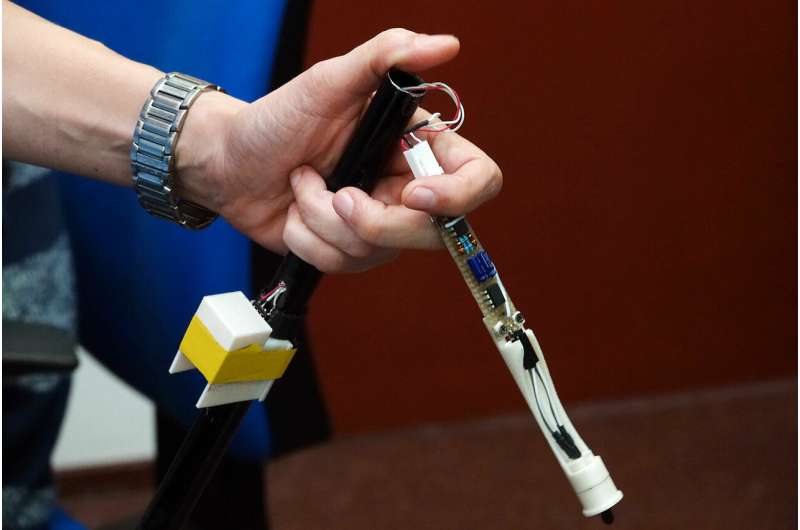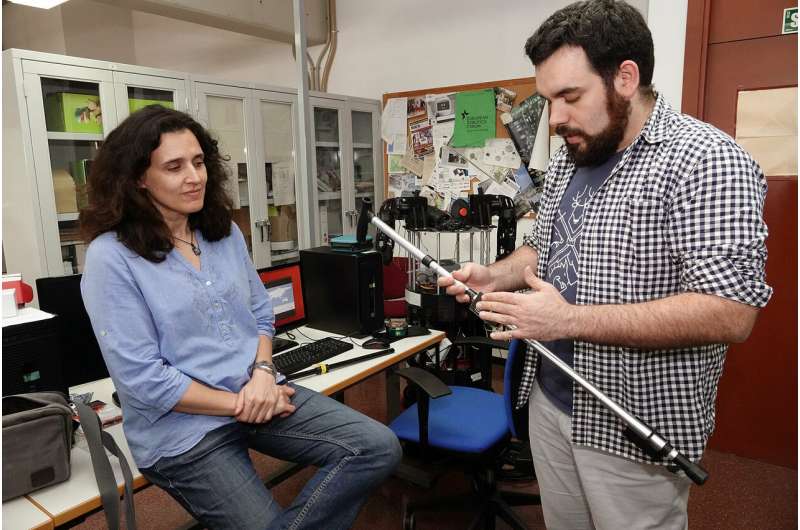Mechanized cane measures patients' rehabilitation process

Robot-aided rehabilitation represents a step forward for patients with walking difficulties. However, its high price, together with some adaptation and transfer problems, limit its use at present.
In this regard, the Embedded Systems Engineering Group of the University of Malaga, specializing in the design of physical devices to aid users, has developed a mechanized cane that can measure the rehabilitation process without impacts on the patient.
The device is low-cost, adaptable to individual users and accessible to anyone—the researchers have made its designs, algorithms and electronic diagrams available under an open license.
This cane monitors the user's weight bearing while walking, providing individualized information on their progress, by means of two embedded pressure sensors placed at two different depths in the tip of a regular cane so that they don't affect cane ergonomics. Likewise, so as to simplify its use, it includes a wireless charger, and data can be collected by a mobile phone via Bluetooth.
"We seek minimal interaction with patients to avoid any cognitive load and prevent any impact on their daily routine," explains Cristina Urdiales, Head of the Department of Electronic Technology.
The research is published in the scientific journal Sensors. "We have managed to keep the cost of manufacturing the cane below €100," says Joaquín Ballesteros, the designer. He says that thus far, it has been downloaded by more than 150 researchers, mainly from the U.S. and France.
Experts explain that in contrast to smart bracelets or watches already on the market, which take metrics based on statistics for healthy users, this device developed at the UMA, in collaboration with ESS-H Profile at Mälardalens University (Sweden), adds real measurement of step parameters. But apart from its medical applications, which enable specialists to monitor each patient, the cane is also aimed at promoting active aging. In fact, it is already being tested in Active Participation Centers.
The next stage of the project is adding a neuronal network capable of processing and interpreting data collected in the cane to predict more complex indicators, which represents a step forward in the functionality of walking aids.

More information: Joaquin Ballesteros et al, Weight-Bearing Estimation for Cane Users by Using Onboard Sensors, Sensors (2019). DOI: 10.3390/s19030509
Provided by University of Malaga




















